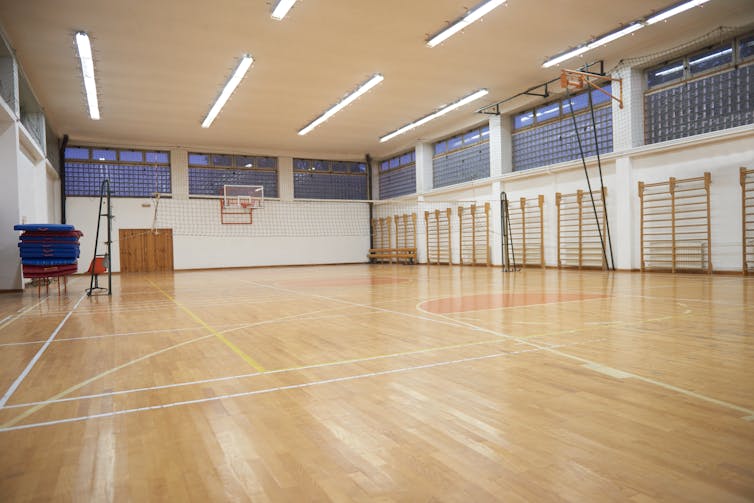
Primary school teachers often provide students with short physical activity breaks to energise kids and minimise classroom disruptions. Our study, published in the journal Educational Psychology Review, found we should be doing this for senior students too. We found a short activity break can improve students’ focus on the task at hand and make them feel more energised.
Physical activity benefits and importance
By the time kids leave primary school, their levels of physical activity have already started to decline. By the end of secondary school, only 10% of Australian senior school students (Years 11 and 12) meet the Australian guidelines of at least 60 minutes per day of moderate-to-vigorous physical activity.

Only 10% of Australian senior school students (Years 11 and 12) meet the Australian guidelines of at least 60 minutes per day of moderate-to-vigorous physical activity. Source: Thomas Samson/AFP
Participating in physical activity can improve young people’s mental health. It may also buffer the effects of stressful life events experienced by senior school students. Unfortunately, many senior school students are time-poor and feel pressure from themselves, their parents and teachers to focus on their studies. This leads them to reduce or even give up recreational activities, including organised sport.
These missed physical activity opportunities may have a negative effect on students’ ability to focus and perform well academically. In fact, there is experimental evidence showing active students perform better on standardised academic tests and measures of cognitive function.
In most Australian states and territories schools are expected to provide students in kindergarten to Year 10 with at least 120 minutes of planned physical activity each week. While some states “encourage” schools to provide physical activity opportunities for senior school students, there are no mandated physical activity requirements for this group. This is consistent with other countries around the world.
What our study found
Lack of time has been identified as the major barrier to providing physical activity opportunities in schools. It may also explain why physical activity isn’t mandatory in the senior school years. This is why we chose to look at the effects of short bursts of high-intensity exercise during class.
Year 11 students across ten high schools were allocated into groups. Some students undertook tailored sessions of high-intensity interval training focusing on aerobic and muscular fitness. Others just continued with class as normal without an exercise break.
We chose high-intensity interval training because it has similar benefits to traditional moderate-intensity exercise (such as jogging), but can be done in a much shorter time. Previous international research has found school-based programmes using this type of exercise can improve students’ physical and mental health.
Teachers in our study were trained in how to deliver the exercise sessions. Their students participated twice a week during class for six weeks. We conducted classroom observations before the programme was delivered and then immediately after students participated in an exercise session to examine the effect on students’ on-task behaviour.
For each lesson, two observers randomly selected 12 students to observe and the order in which students were to be observed. After each 10-second interval, the observers recorded the student’s behaviour as “on-task” (reading, writing or performing the designated task) or “off-task” (walking around the class, talking or not attending to the assigned academic activity).
We also asked students to report how they were feeling (for example, their feelings of vitality, alertness and energy) at the start and end of the lesson. We found participation in exercise sessions improved students’ on-task behaviour by about 20%. Students also reported significantly higher levels of vitality (+0.7 units), meaning they felt better and more focused after the session.
Our findings echo previous research that has found short exercise breaks help children in primary schools pay better attention to their work in class. Future research is needed to determine if these effects extend to improvements in academic achievement. But there is enough evidence for departments of education to mandate physical activity in the senior school years.
Angus Leahy, Charles H. Hillman, Chris Lonsdale, Narelle Eather and Philip Morgan contributed to this article and research.
David Lubans, Professor, University of Newcastle and Myrto Mavilidi, Research Fellow, University of Newcastle
This article is republished from The Conversation under a Creative Commons license. Read the original article.
Liked this? Then you’ll love…
New study proves that physical activity in schools boosts learning
Studies reveal that kids today are lacking physical literacy








